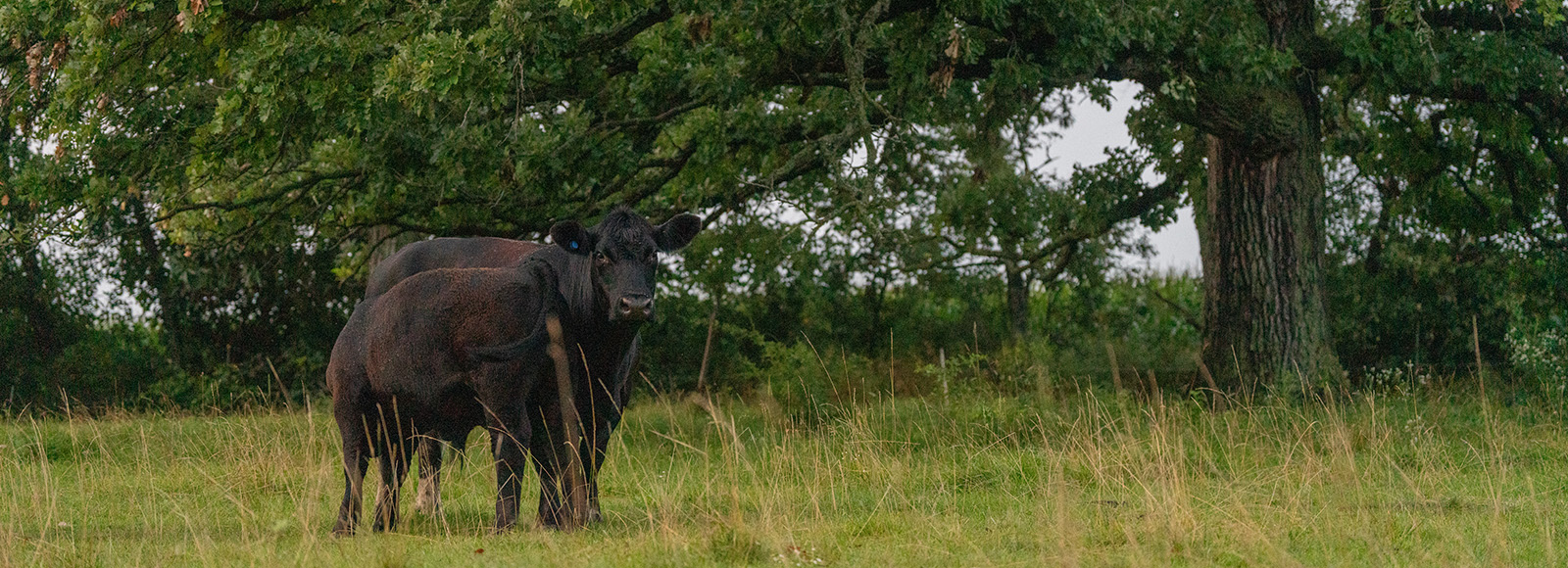
Frequently Asked Questions:
Cow Vaccinations




Healthy cows for a healthy herd
Learn from these commonly asked questions the essential considerations for a complete cowherd vaccination program.
Common Vaccines
Work with your veterinarian to build a health protocol specific to your herd. Your veterinarian is the best resource you have to identify the pathogens and disease challenges that are most important in your area.
Vaccinations for cows and breeding heifers should be focused on optimizing conception and preventing abortion. Administering a combination vaccine such as BOVILIS® VISTA® 5 VL5 SQ CFP effective against reproductive and respiratory diseases, plus coverage against vibriosis and leptospirosis in one vaccine.
Always follow label directions. A modified-live vaccine (MLV) should only be used if a cow or breeding heifer has been vaccinated within the past 12 months with an IBR and a BVD-containing MLV.
In addition to reproductive and respiratory vaccinations, breeding animals often are given a clostridial vaccination.
Bulls should receive annual reproductive and respiratory vaccinations, so work with your veterinarian to determine your vaccination program for herd bulls. Bulls can spread sexually transmitted diseases (STDs) like vibriosis through breeding. Don’t forget to include trichomoniasis testing for bulls in your health protocol. There are no vaccines for trichomoniasis, so testing is the best option available.
Bovine viral diarrhea (BVD) virus can cause decreased fertility, abortions and congenital malformations in calves. Calves that are persistently infected (PI) will shed the virus throughout their lives. Persistent infection can occur in fetuses exposed to the virus in the first 120 days of gestation. Congenital-infected (CI) calves are exposed after 120 days of pregnancy and have slower growth plus greater susceptibility to disease.
Consult with your veterinarian regarding your herd’s vaccination program.
BOVILIS VISTA vaccines, including BOVILIS VISTA 5 VL5 SQ CFP, offer protection throughout gestation. They provide respiratory and reproductive efficacy and duration of immunity against disease caused by the most common sub genotype of BVD — the Type 1b strain. It also offers an administration window that allows dosing as close as two weeks prior to breeding if the animal received the primary vaccination prior to this time.
Leptospirosis, often called “Lepto,” is a common and contagious reproductive disease in cattle that can result in reproductive failure such as abortion and infertility. Lepto hardjo-bovis (LHB) is a primary cause of leptospirosis.1
Avoiding exposure is difficult, so vaccination is typically recommended in bulls, cows and replacement heifers. Work with your veterinarian to establish a reproductive vaccine program for your breeding herd.
BOVILIS VISTA 5 VL5 SQ CFP and BOVILIS VISTA 5 VL SQ CFP are effective against the five strains of leptospirosis, including LHB.
Vaccination Tips
To be effective, vaccines must be administered to animals that are healthy and, in a condition, to respond to the vaccination. To get the best results from vaccination, carefully consider administration timing, health status of animals and proper vaccine handling.
Internal parasites can impact cattle immunity and their response to vaccines. Don’t forget about parasite treatment, ideally one to two weeks prior to vaccination.
Always work with your herd’s veterinarian to develop a vaccination program. Try to minimize the number of injections given at one time as much as possible. Multiple Gram-negative vaccines (for example, leptospirosis, vibriosis, pinkeye) may cause cattle to spike a fever and go off feed for a short period of time.
Needle size and length are important to ensure vaccines work as expected and meet Beef Quality Assurance (BQA) standards. When it comes to cows, a 16- or 18-gauge needle is recommended.
Depending on the injection type, intramuscular (IM) or subcutaneous (SQ), different needle lengths are recommended.
- SQ vaccine injection: 5/8’’ to ½’’ length needle
- IM injection: 1”-1.5” length needle
Handling & Storage
Follow the proper steps for storing and handling vaccines. For modified live virus (MLV) vaccines, store and handle both the vaccine cake and sterile diluent according to label directions. Mixing the cake with warm diluent can greatly shorten or eliminate the effectiveness of the vaccine. Freezing is harmful as well and can damage both MLV and killed vaccines.
For best results, store vaccines in a well-functioning refrigerator and avoid storing products in the door where temperatures can fluctuate. MLV vaccines should be used within two hours of mixing.
When reconstituting an MLV vaccine, use a swirling or rolling motion vs. shaking, which can damage the MLV within the vaccines. Once mixed, an MLV vaccine should be kept at the proper temperature and out of direct sunlight.
Always use a clean needle when filling a syringe from the bottle. Don’t reload a syringe from a bottle using a needle previously used to administer a vaccine to an animal.
Sanitize syringes after use, using only hot water for MLV vaccine syringes. Soaps and disinfectants can be used for killed vaccine syringes, but rinse thoroughly.
Cattle Producers:
Merck Animal Health is Here to Help
Always work with your local veterinarian who knows your goals and health challenges in your area.

Explore the complete line of Vaccines from Merck Animal Health

References
1. Wikse, S. E., Rogers, G. M., Ramachandran, S., Engelken, T. J., Epperson, W. B., Larson, R. L., Maas, J., Richey, E., & Bolin, C. Herd prevalence and risk factors of Leptospira infection in beef cow/calf operations in the United States: Leptospira borgpetersenii Serovar Hardjo. (2007). The Bovine Practitioner, 41(1), 15-23. https://doi.org/10.21423/bovine-vol41no1p15-23
